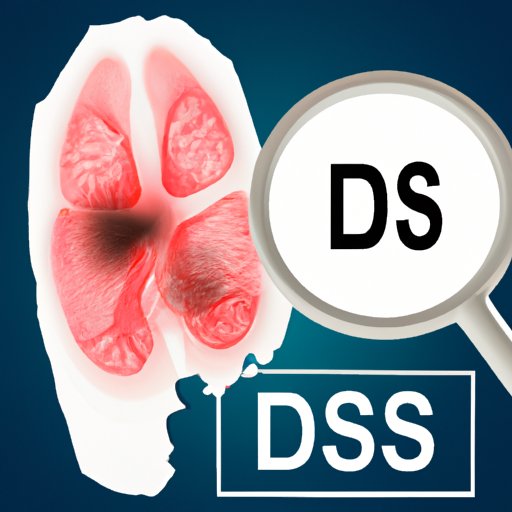
Introduction
Digital signal processing (DSP) is the use of mathematical algorithms to analyze, filter, and transform signals. While DSP has historically been used in fields like telecommunications and audio engineering, it is increasingly being applied in healthcare to enhance patient care. By analyzing large volumes of patient data and delivering more accurate diagnosis and treatment plans, DSP has the potential to significantly improve healthcare outcomes. In this article, we’ll explore what DSP is, how it is used in healthcare, and the latest advancements and applications of this technology.
The Basics of DSP in Healthcare: Everything You Need to Know
DSP is a mathematical technique used to analyze and process signals. In healthcare, DSP is used to analyze patient data in order to detect patterns, make diagnoses, and develop treatment plans. DSP systems typically consist of sensors to collect data, algorithms to analyze the data, and hardware/software to process and display the results.
One key aspect of any DSP system is the quality of its sensors. In healthcare, sensors commonly used include electrocardiograms (ECG), electroencephalograms (EEG), and magnetic resonance imaging (MRI). These sensors collect data on things like heart rate, brain activity, and internal organ structure, which is then fed into algorithms for analysis.
The algorithms used in DSP are typically highly complex and optimized for specific applications. For example, algorithms used for medical imaging may be tailored to identify patterns in X-ray or MRI images. Once the data has been analyzed, DSP software can produce visual representations of the results, such as charts or graphs.
One common use of DSP in healthcare is in medical imaging. DSP can be used to analyze images of internal organs and structure to detect abnormalities such as tumors or lesions. Other applications of DSP in healthcare include telemedicine, which allows doctors to monitor patients remotely, and early disease detection, which can help prevent the spread of infectious diseases.
Understanding DSP in Healthcare: Advancements and Applications
Recent advancements in DSP technology have the potential to greatly improve healthcare outcomes. One example is artificial intelligence (AI), which can be used to analyze large volumes of patient data and deliver more accurate diagnoses and treatment plans. AI is particularly useful for analyzing data from medical imaging and improving disease detection rates.
Another application of DSP in healthcare is telemedicine. By using DSP to collect and analyze patient data remotely, doctors can provide more personalized and effective treatment plans. Remote patient monitoring can also help healthcare providers detect potential issues before they become more serious.
However, implementing DSP in healthcare can also pose challenges, such as privacy concerns and the cost of developing and implementing new technology. To overcome these challenges, it’s important to focus on data security, cost-effectiveness, and user-friendly design.
Enhancing Patient Care through DSP: The Role of Digital Signal Processing in Healthcare
One of the key benefits of DSP in healthcare is its ability to improve patient outcomes by enabling faster and more accurate diagnoses. By analyzing large volumes of patient data, DSP systems can identify patterns and trends that may not be apparent to the human eye. This can lead to more accurate diagnoses and more effective treatment plans.
Another benefit of DSP in healthcare is its potential to monitor patients remotely and provide personalized treatment plans. By analyzing patient data in real-time, doctors can track changes in a patient’s condition and adjust their treatment plan accordingly. Remote monitoring can also help patients manage their conditions more effectively and reduce the need for hospitalization.
Overall, using DSP in healthcare can lead to significant cost savings and improved efficiency. By automating processes and reducing the need for human intervention, DSP systems can reduce the workload of healthcare providers and improve patient outcomes.
From Data Analysis to Treatment Plans: The Impact of DSP in the Healthcare Industry
Data analysis is a critical component of healthcare, as it helps doctors make more informed treatment decisions. With DSP, healthcare providers can analyze large volumes of patient data and develop personalized treatment plans based on factors like age, sex, and medical history.
Through DSP, healthcare providers can also monitor patients more closely to detect potential health issues before they become more serious. For example, by analyzing changes in a patient’s heart rate or blood pressure over time, doctors can detect an irregular heartbeat or high blood pressure before it becomes a more serious issue.
In the healthcare industry, DSP has been used to improve patient outcomes in a variety of settings, including hospitals, clinics, and nursing homes. For example, DSP systems have been used to improve the accuracy of diagnoses for conditions like diabetes and heart disease.

Building a Stronger Healthcare System with DSP: A Comprehensive Guide
As DSP technology continues to evolve, it has the potential to revolutionize the healthcare industry and improve patient outcomes. However, implementing DSP in healthcare requires careful consideration of factors like data security, cost-effectiveness, and regulatory compliance.
To get the most out of DSP in healthcare, it’s important to work with experienced providers who understand the challenges and opportunities of this technology. With the right tools and expertise, healthcare providers can use DSP to deliver more personalized, efficient, and effective care to patients.
Improving Healthcare Outcomes with DSP: A Close Look at the Latest Tools and Technologies
As DSP technology continues to evolve, new tools and technologies are being developed to improve healthcare outcomes. One example is remote patient monitoring, which uses DSP to collect and analyze patient data in real-time. This allows doctors to monitor patients remotely and adjust their treatment plans as needed.
Another emerging application of DSP in healthcare is telemedicine. By using DSP technology to collect and analyze patient data remotely, doctors can provide more personalized and convenient care to patients. This includes remote consultations, remote monitoring, and even virtual surgeries.
Overall, the future of DSP in healthcare looks bright. With continued advancements in technology and a focus on data security and regulatory compliance, DSP has the potential to provide patients with more personalized, efficient, and effective care than ever before.
Conclusion
DSP is a powerful tool for improving healthcare outcomes by enabling faster and more accurate diagnoses, remote patient monitoring, and personalized treatment plans. By leveraging the latest advancements in DSP technology, healthcare providers can work to enhance patient care and reduce costs. Whether you’re a patient, healthcare provider, or industry expert, it’s important to stay up-to-date on the latest developments in DSP and explore how this technology can be used to improve healthcare outcomes for everyone.





